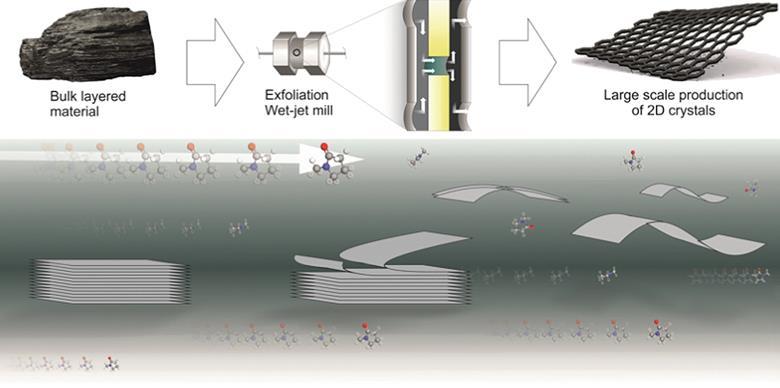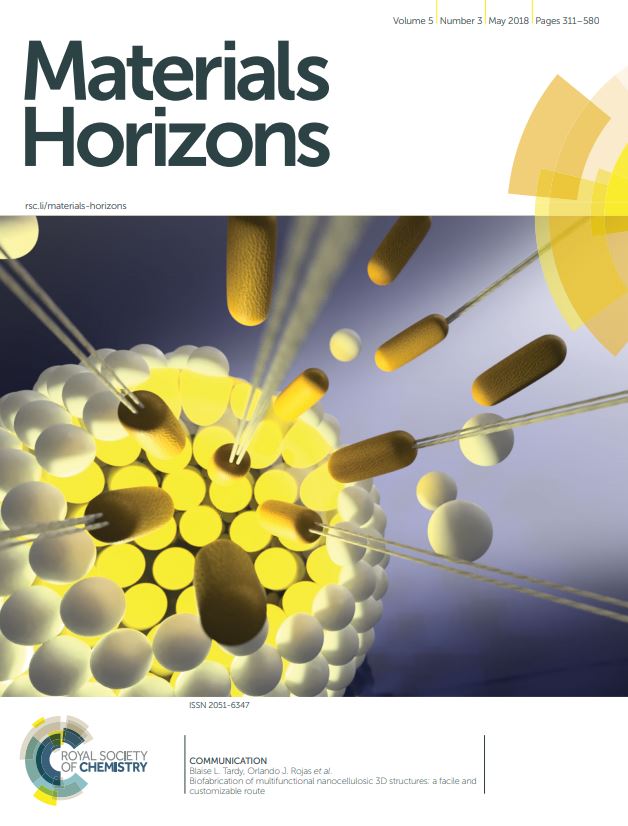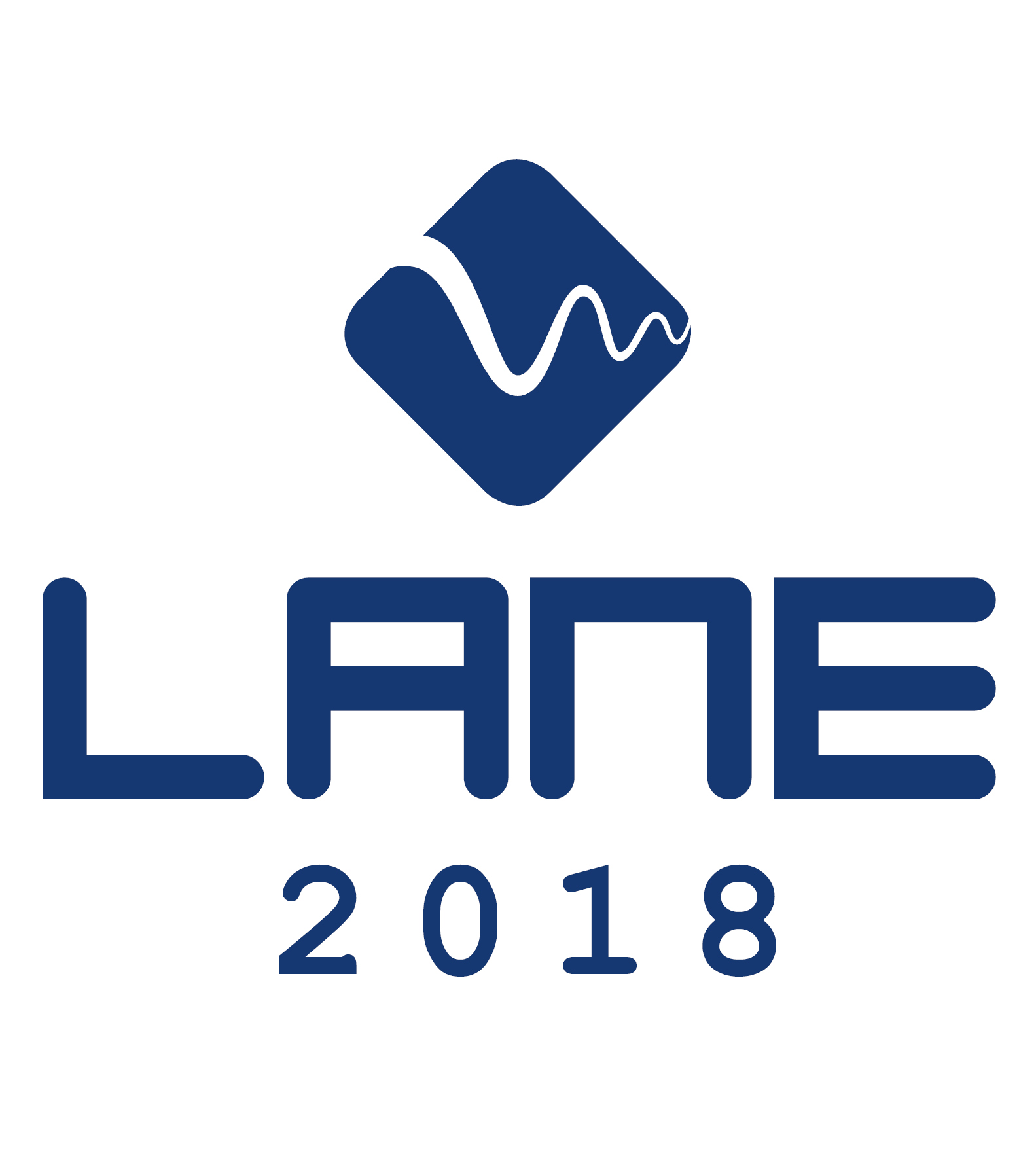New process generates high quality 2D crystals in minutes

For few- and single-layered materials like graphene to be industrially useful there needs to be a scalable, cheap and reproducible way to produce them. Now, scientists in Italy have come up with a new exfoliation process that meets all of these requirements.
Francesco Bonaccorso and co-workers from the Italian Institute of Technology propose what they call a high pressure wet-jet-milling process to, essentially, blast apart layers of materials like graphite. A hydraulic mechanism and piston generate up to 250MPa of pressure to push a mixture of the bulk material dispersed in solvent through five different disks. The disks are interconnected and perforated with tiny adjustable holes (0.3–0.1mm diameter), which generate colliding jet streams. A similar idea is already used in industry to pulverise drugs or paints.
The major advantage here is that it takes only minutes to produce high quality 2D crystals that would take hours to make by other methods: it takes less than 3 minutes to make 1g. The resulting dispersions of 2D crystals are shown to be usable for inkjet printing and in battery anodes without needing a purification step.
Read the article in Chemistry World here.
High-yield production of 2D crystals by wet-jet milling
A. E. Del Rio Castillo, V. Pellegrini, A. Ansaldo, F. Ricciardella, H. Sun, L. Marasco, J. Buha, Z. Dang, L. Gagliani, E. Lago, N. Curreli, S. Gentiluomo, F. Palazon, M. Prato, R. Oropesa-Nuñez, P. S. Toth, E. Mantero, M. Crugliano, A. Gamucci, A. Tomadin, M. Polini and F. Bonaccorso
Mater. Horiz., 2018, Advance Article
DOI: 10.1039/c8mh00487k
This article is free to access until 24 August 2018
















